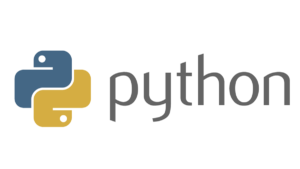Учитывая сплющенный словарь, задача состоит в том, чтобы преобразовать этот словарь во вложенный словарь, где ключи необходимо разделить на»_», учитывая, где будет запущен вложенный словарь.
Метод № 1: Использование наивного подхода
# Python code to demonstrate
# conversion of flattened dictionary
# into nested dictionary
def insert(dct, lst):
for x in lst[:-2]:
dct[x] = dct = dct.get(x, dict())
dct.update({lst[-2]: lst[-1]})
def convert_nested(dct):
# empty dict to store the result
result = dict()
# create an iterator of lists
# representing nested or hierarchical flow
lists = ([*k.split("_"), v] for k, v in dct.items())
# insert each list into the result
for lst in lists:
insert(result, lst)
return result
# initialising_dictionary
ini_dict = {'Geeks_for_for':1,'Geeks_for_geeks':4,
'for_geeks_Geeks':3,'geeks_Geeks_for':7}
# printing initial dictionary
print ("initial_dictionary", str(ini_dict))
# code to convert ini_dict to nested
# dictionary splitting_dict_keys
_split_dict = [[*a.split('_'), b] for a, b in ini_dict.items()]
# printing final dictionary
print ("final_dictionary", str(convert_nested(ini_dict)))
Выход:
initial_dictionary {‘for_geeks_Geeks’: 3, ‘Geeks_for_geeks’: 4, ‘geeks_Geeks_for’: 7, ‘Geeks_for_for’: 1}
final_dictionary {‘Geeks’: {‘for’: {‘for’: 1, ‘geeks’: 4}}, ‘for’: {‘geeks’: {‘Geeks’: 3}}, ‘geeks’: {‘Geeks’: {‘for’: 7}}}Метод № 2: Использование диктанта по умолчанию и рекурсивного подхода
# Python code to demonstrate
# conversion of flattened dictionary
# into nested dictionary
# code to convert dict into nested dict
def nest_dict(dict1):
result = {}
for k, v in dict1.items():
# for each key call method split_rec which
# will split keys to form recursively
# nested dictionary
split_rec(k, v, result)
return result
def split_rec(k, v, out):
# splitting keys in dict
# calling_recursively to break items on '_'
k, *rest = k.split('_', 1)
if rest:
split_rec(rest[0], v, out.setdefault(k, {}))
else:
out[k] = v
# initialising_dictionary
ini_dict = {'Geeks_for_for':1,'Geeks_for_geeks':4,
'for_geeks_Geeks':3,'geeks_Geeks_for':7}
# printing initial dictionary
print ("initial_dictionary", str(ini_dict))
# printing final dictionary
print ("final_dictionary", str(nest_dict(ini_dict)))
Выход:
initial_dictionary {‘for_geeks_Geeks’: 3, ‘Geeks_for_for’: 1, ‘Geeks_for_geeks’: 4, ‘geeks_Geeks_for’: 7}
final_dictionary {‘for’: {‘geeks’: {‘Geeks’: 3}}, ‘geeks’: {‘Geeks’: {‘for’: 7}}, ‘Geeks’: {‘for’: {‘for’: 1, ‘geeks’: 4}}}Метод № 3: Использование reduce и getitem
# Python code to demonstrate
# conversion of flattened dictionary
# into nested dictionary
from collections import defaultdict
from functools import reduce
from operator import getitem
def getFromDict(dataDict, mapList):
# Iterate nested dictionary
return reduce(getitem, mapList, dataDict)
# instantiate nested defaultdict of defaultdicts
tree = lambda: defaultdict(tree)
d = tree()
# converting default_dict_to regular dict
def default_to_regular(d):
"""Convert nested defaultdict to regular dict of dicts."""
if isinstance(d, defaultdict):
d = {k: default_to_regular(v) for k, v in d.items()}
return d
# initialising_dictionary
ini_dict = {'Geeks_for_for':1,'Geeks_for_geeks':4,
'for_geeks_Geeks':3,'geeks_Geeks_for':7}
# printing initial dictionary
print ("initial_dictionary", str(ini_dict))
# code to convert ini_dict to nested dictionary
# iterating_over_dict
for k, v in ini_dict.items():
# splitting keys
* keys, final_key = k.split('_')
getFromDict(d, keys)[final_key] = v
# printing final dictionary
print ("final_dictionary", str(default_to_regular(d)))
Выход:
initial_dictionary {‘Geeks_for_for’: 1, ‘Geeks_for_geeks’: 4, ‘for_geeks_Geeks’: 3, ‘geeks_Geeks_for’: 7}
final_dictionary {‘Geeks’: {‘for’: {‘geeks’: 4, ‘for’: 1}}, ‘geeks’: {‘Geeks’: {‘for’: 7}}, ‘for’: {‘geeks’: {‘Geeks’: 3}}}

